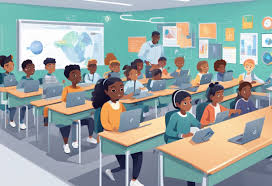The relationship between a skilled teacher and carefully selected educational resources has never been more important than in today’s media-rich environment. Among these resources, kids animated shows stand out as particularly powerful tools for engaging young minds while simultaneously delivering valuable educational content. These colorful, dynamic programs do far more than entertain—they can reinforce curriculum objectives, introduce complex concepts, and support social-emotional development when thoughtfully integrated into educational strategies.
When an experienced teacher incorporates animation into their teaching toolkit, they recognize that children’s natural attraction to these visually stimulating formats creates an opportunity for deeper learning. The best kids animated shows are designed with both entertainment and educational value in mind, created by teams that often include child development specialists, educators, and content experts alongside animators and storytellers. This collaborative approach results in content that captivates children while simultaneously nurturing their intellectual, social, and emotional growth.
The cognitive benefits of well-designed educational animation have been extensively documented in developmental psychology research. Animation excels at making abstract concepts concrete through visual representation, helping children understand ideas that might otherwise be difficult to grasp. For example, concepts like cellular division, planetary motion, or mathematical operations become more accessible when visualized through animation. This visualization supports comprehension and retention, particularly for younger children who are still developing their capacity for abstract thinking.
Memory formation and retention also benefit significantly from the multimodal nature of animated content. When information is presented through combined visual imagery, movement, narrative, and sound, it creates multiple neural pathways for storing and retrieving that information. Educational psychologists refer to this as “dual coding theory”—the idea that information encoded in both visual and verbal forms is more readily remembered than information encoded in only one format. Teachers who understand this principle can strategically use animation to help students form stronger, more accessible memories of important concepts.
Language development represents another area where quality animated content makes significant contributions. Well-crafted educational shows often feature rich vocabulary, clear articulation, and varied sentence structures that expose children to language that might be above their current reading level but within their comprehension capabilities when supported by visual context. This exposure to “academic language” in engaging contexts helps bridge the gap between conversational language and the more formal language children will encounter in textbooks and classroom instruction.
Critical thinking skills are increasingly emphasized in educational standards, and thoughtfully selected animated content can support their development. Many educational shows intentionally present problems for characters to solve, modeling the process of analyzing situations, considering options, and making decisions. Teachers can extend these learning opportunities by pausing shows at critical moments to ask students what they would do in the character’s position, or by discussing alternative approaches to the problems presented in the narrative.
The social-emotional curriculum has gained prominence in education, recognizing that children’s ability to understand and manage emotions, develop empathy, and navigate relationships is fundamental to their overall success. Many contemporary kids animated shows explicitly address these topics, featuring characters who experience and process emotions, resolve conflicts, and build healthy relationships. These storylines provide valuable frameworks that teachers can reference when helping students navigate similar situations in real life.
Multicultural awareness and appreciation for diversity are woven into many quality animated programs, exposing children to different cultures, family structures, abilities, and perspectives. This exposure helps combat stereotypes and build the foundation for a more inclusive worldview. Teachers can leverage these elements to facilitate discussions about respect, understanding, and the value of diverse perspectives, helping children develop into compassionate global citizens.
Creative thinking and imagination are natural companions to animation, where the boundaries of reality can be expanded through visual storytelling. When children engage with animated worlds where characters solve problems in innovative ways, they are inspired to think beyond conventional boundaries in their own creative endeavors. Teachers can build on this inspiration by encouraging students to create their own stories, artwork, or inventions inspired by the animated content they’ve enjoyed.
Digital literacy skills become increasingly important as students progress through their education and into their future careers. Quality educational animation often serves as an entry point to digital media consumption, helping children learn to be thoughtful, critical consumers of content. Teachers can use animated shows as opportunities to discuss how media is created, how to evaluate its quality and trustworthiness, and how to balance media consumption with other activities.
The accessibility of animated content for diverse learners represents one of its greatest strengths in educational settings. Students with learning differences, language barriers, or attentional challenges often find animated content more accessible than traditional text-based learning materials. The combination of visual storytelling, expressive voice acting, and engaging narratives creates multiple entry points for understanding, allowing more students to access the curriculum successfully.
Parent partnerships are strengthened when teachers communicate about the educational animated content being used in the classroom. When parents understand the learning objectives behind the shows their children watch at school, they can reinforce these lessons at home, ask targeted questions about the content, and even select complementary programs for home viewing. This school-home connection amplifies the educational impact and creates consistency across children’s learning environments.
In conclusion, when teachers skillfully integrate high-quality kids animated shows into their educational practice, they harness a powerful tool for learning that meets children where they are while guiding them toward educational objectives. The pedagogical power of animation lies not in replacing traditional teaching methods but in complementing them, creating a rich, multimodal learning environment that engages children’s natural curiosity and desire for storytelling while building the knowledge, skills, and dispositions they need to thrive.

